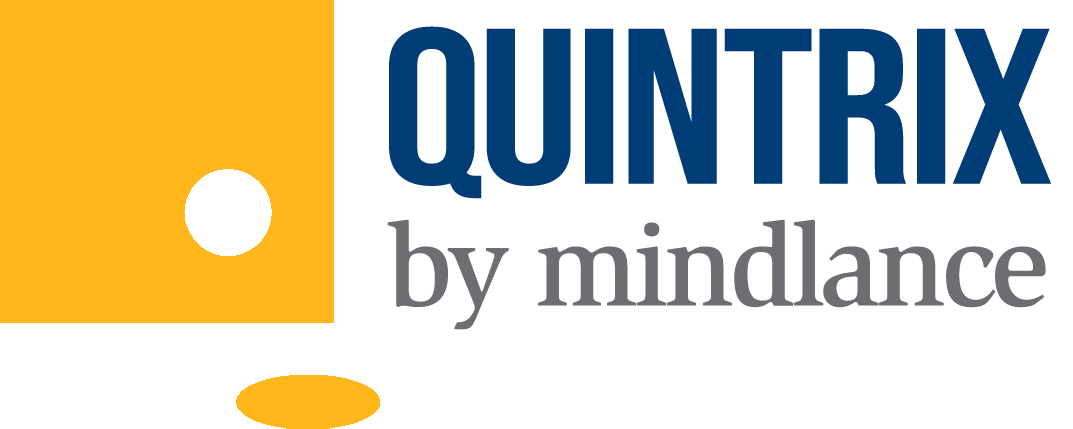It can be challenging for an enterprise to efficiently hire, train, and onboard new talent. Quintrix understands these difficulties and provides a solution that fulfills your immediate hiring needs and supports your Diversity, Equity, and Inclusion (DEI) efforts. Our partnership offers tailored talent pools and personalized training to complement your growth objectives, innovation goals, and commitment to diversity.
Are you tired of falling behind on your talent strategy?

You need to hire a large number of tech talent and always feel behind.

You prefer to hire someone local but are rushed and forced into offshore talent.

You want an internal pipeline of diverse talent, but you haven’t found the right solution yet.

You want to leverage junior talent, but they need the time to upskill first.

You can have a talent pipeline that fits your skill and culture needs

Develop a cost-effective talent pipeline ready to deploy for your next project

Hire trained talent that will expedite productivity

Meet your diversity goals while supporting future workforce

No more wasted time with high turnover or bad-fit

RESULTS YOU CAN COUNT ON
90%
Retention
Rate
50%
Faster Time to
Productivity
30%
Lower Cost
of Acquisition
FAQ
1. How is Quintrix different from the traditional staffing model?
By using our Hire-Train-Deploy model we create the exact pool of diverse talent companies need, in just 120 days or less.
The Quintrix model helps Fortune 1000 companies fill volume, in-demand tech roles with associates that walk in the door with the exact skills needed to fill them.
2. Do your candidates require sponsorship?
The fact that none of our candidates require sponsorship is one of our main selling points. All of our candidates are either US Citizens or Green Card holders and do not require sponsorship. In fact, legal work authorization is a criteria for all of our applicants.
3. What experience level candidates do you provide?
We support 2 levels of experience
-Entry level and new graduates
-Experienced candidates with 2 – 5 years of experience
4. What skill sets do you train for?
The market needs are always changing and we train for any enterprise technology.
5. Can I request training for a specific skill?
Yes. We even include professional development training in our programs. If you need to mix and match, we have you covered.
6. Are you more expensive than traditional staffing companies?
No, in fact we save clients money. When clients partner with us, they do not pay a premium for hiring talent with in-demand skills. Also, because we make the upfront investment in training, you offload the attrition risk to us.
7. How do you source candidates?
We use an omni-channel sourcing strategy which includes our internal candidate database, job boards, social media, our referral network and our academic partnerships.
We have hired, trained, and deployed over 600 early career talent for organizations to fill their pipelines with hand-picked, custom-trained IT talent
Proven model to improve productivity, reduce cost and de-risk hiring

New IT Talent Takes Time and Costs Money. But does it have to?

New employees take 12 months (on average) to become fully productive.

62% of businesses with effective onboarding programs witness a 54% increase in employee engagement and a higher time-to-productivity ratio.
This tells us two things

It takes far too long to generate value from a new hire

Companies must establish highly effective onboarding processes to accelerate that timeline.
“The RTD model provides a more risk-free way to companies and employees
to have a trial period before committing the time and expense of full-time onboarding”

Trusted partner for CIOs who want to make an impact
It can be challenging for an enterprise to efficiently hire, train, and onboard new talent. Quintrix understands these difficulties and provides a solution that fulfills your immediate hiring needs and supports your Diversity, Equity, and Inclusion (DEI) efforts. Our partnership offers tailored talent pools and personalized training to complement your growth objectives, innovation goals, and commitment to diversity.

USE CASES
1
Bring a function or capability in-house
2
Succession planning for legacy skills
3
Supporting diverse hiring practices

When a company lacks the expertise to create a certain new application, infrastructure, or function, it often enlists the help of an outside entity or resource. Once the development activity is complete, the organization may want to bring the function or capability in-house. A cost-based or strategic decision will require new, cost-effective support talent that will grow with the company. Regardless of the underlying driver, RTD is a viable talent acquisition approach that is cost-effective and timely.

This affordable model enables businesses to source trained talent in an abbreviated time frame to support their new IT requirements. It is, however, essential to note that bringing in emerging talent requires a transition and knowledge transfer plan. If the tech team has experienced managers with the technical expertise, the new hires can start delivering on the projects under their guidance. In the absence of experienced technical expertise, the team would need to first hire experienced line managers for close guidance and mentorship until the new talent is capable of taking over the function.
An effective RTD model provides a candidate success team to run in parallel with line managers’ ongoing support on the job. To ensure continuous development and advancement, the RTD provider’s success team should consult with the company’s line managers on a regular basis.
Key Takeaway: RTD is a highly cost-effective option to bring a function or capability in-house; however, the model requires an effective transition and knowledge transfer plan in coordination with the existing team’s line managers to ensure the talent is productive faster.

In technology teams, the preservation of invaluable legacy skills, competencies, and institutional knowledge is pivotal for organizational success. Recognizing this, businesses prioritize the retention of such assets through meticulous succession planning.

However, despite careful preparation, the simultaneous departure of key skill-holders and their support staff presents a formidable challenge. This scenario risks a sudden depletion of essential talent, skill, and knowledge, leaving the organization vulnerable.
The Recruit, Train, Deploy (RTD) approach offers a strategic solution to this issue. In addition to filling primary skill positions with trained internal talent, organizations can partner with RTD providers to equip new contract staff with requisite skills. This proactive measure serves as a buffer in the event of unforeseen departures, providing a crucial window of opportunity to manage transitions smoothly. Furthermore, the option to transition RTD talent into permanent roles ensures a seamless integration of essential skills into the organizational framework.
Key Takeaway: Beyond conventional succession planning lies a proactive strategy to safeguard irreplaceable corporate knowledge and deep skill sets. Through the RTD approach, organizations can effectively bridge potential gaps in legacy skills and competencies, ensuring long-term resilience and continuity.

Diversity hiring helps an organization increase staff satisfaction, productivity, and retention. In fact, McKinsey reports that, “Diverse companies enjoy 2.5 times higher cash flow per employee, have 19% higher revenues, and have better anticipation/coping/adaptation skills.
“Slightly more than 85% of employers reported having formal diversity recruiting goals,” according to NACE’s 2022 Recruiting Benchmarks Report. However, there can be challenges in meeting these goals.
Most IT organizations typically hire their early career talent from a handful of colleges and universities in their area of operation, limiting their talent and diversity pool, especially in regions with fewer minorities. This can pose issues in meeting diversity goals when attempting to source talent to address particular technical skills needs.
RTD firms typically use omnichannel talent sourcing methods to find diverse talent with high-demand skill sets, presenting a viable alternative to university and other traditional hiring methods. This approach also frees internal HR/recruiting teams to focus on other initiatives.
Key Takeaway: Diversity hiring isn’t a fad, it’s a strategy with tangible benefits. With the RTD method, companies can meet diversity goals while filling in much-needed IT skill deficiencies.
4
Bringing an offshore operation onshore
5
Decluttering your IT talent strategy
6
Supporting organizational growth


While there are some clear cost advantages to using offshore talent for software development, many organizations are shifting to the onshore or nearshore approach for reasons that can offset any cost savings—they want to align their IT team with similar cultures and time zones. These two factors alone can significantly impact the productivity and cohesion of a distributed team, thereby mitigating any cost-saving advantages.
In fact, Bloomberg reports that “80% of companies in North America are actively considering nearshore.”
Historically, IT leadership has turned to affordable junior talent as a bridge during such a transition. The problem with this strategy is that it typically brings on largely untrained talent, which can increase risk and decrease efficiency.
The RTD model is an excellent alternative in these scenarios. Temporary developers are pre-trained for up to 12 weeks on the skills needed before joining a team. This training has no upfront cost, and line managers can even help develop the curriculum. One of the most significant benefits of the RTD model is that a business has 12 weeks to calibrate a mutual fit, significantly de-risking the hiring process.
Employing the RTD model while migrating from offshore to onshore/nearshore does require some knowledge transfer from the offshore team or some expertise onshore before infusing RTD talent. Therefore, the involvement of offshore team or onshore experts in curriculum development and training is required.
Key Takeaway: RTD can be a very effective tool when migrating IT talent to closer shores. It can ease the burden of transferring knowledge and workload from offshore teams while maintaining productivity.

Large IT teams may struggle with managing myriad sources of talent acquisition – e.g.., multiple temporary agencies, consulting companies, recruiting firms, etc. A failing strategy can lead to inefficiencies, ineffective internal talent development, and retention struggles. The HR and leadership teams may unintentionally neglect existing internal talent to focus on the bevy of temporary talent – often leaving internal staff dissatisfied. This can lead to turnover and critical knowledge/intellectual property loss. IT leaders are always looking for efficiencies.
Tech teams that employ the RTD model often see a 90% retention and conversion-to-permanent rate, which is higher than any other early-talent development approach. A primary reason for this is the streamlined nature of RTD. If planned strategically, HR and IT leadership teams can minimize reliance on multiple temporary staffing and consulting firms by partnering with an RTD provider. Organizations will benefit from a more streamlined operation with a clear plan to cultivate internal talent.
Key Takeaway: RTD is designed for multiple hires at scale. This is where the cost efficiencies come in. Additionally, its coordinated nature helps foster a cohesive, operationally sound early talent acquisition program for enterprises



As companies grow, they require investment in technology talent to support the growth In 2024, 66% of companies are increasing their IT budgets, and 59% plan to increase the size of their IT staff (Spiceworks, 2024 State of IT Report). The money is there, but is the strategy?.
Sourcing the necessary skills and finding early-career talent that can make an immediate impact is harder said than done. This is where many companies struggle. Organizations can set themselves up for a prosperous future with cultivated talent that advances their competitive advantage when executed correctly. However, recruitment and training can be overwhelming and an unwelcome challenge to many businesses.
The RTD model can help. Whether a business needs help achieving its yearly project goals or meeting its multi-year technology roadmap, RTD can supplement experienced hiring with trained junior talent that can hit the ground running productively from day one. The line managers can often participate in the training curriculum to ensure the talent has the skills required at onboarding.
RTD firms tend to focus on hard technical skills and much-needed soft skills such as communication, teamwork, adaptability, problem-solving, critical thinking, and even leadership traits. This combination helps to ensure temporary talent’s productivity and ongoing contribution to an IT team.
Key Takeaway: The RTD model can help supplement an IT team with early career talent that has the skills and business understanding needed to advance a business’s strategic goals.
7
Specialized skill development
8
Supporting HR with talent programs
9
Reducing dependency on just-in-time hiring


IT leadership constantly tries to innovate and keep up with the latest trends and technology releases.
Take AI-augmented software engineering, for example. Technology organizations across the globe are looking for ways to integrate AI strategies into their development efforts.
Gartner Group states, “By 2027, half of all enterprise software engineers should be using generative AI tools to help with the development, testing, and operation of software.”
If an organization doesn’t have this expertise in-house, what can they do?
The RTD model can fill in these gaps in a collective team skillset. Line managers can work closely with the RTD provider to cultivate temporary talent to bring these new skills into an organization. This on-demand approach shortens the recruiting curve, speeds access to unique skill sets, and provides immediate access to emerging trends before it is too late.
According to the World Economic Forum, 2023, “76% of companies are investing in emerging technologies.”
Key Takeaway: Using the RTD model, an organization can immediately jump on any emerging trend. To ensure the temporary talent has the necessary skills, a business team can work with the RTD provider to pre-train talent before they join the organization.


Upskilling an IT team can be a significant competitive advantage and an essential aspect of keeping up with new industry trends and technologies. However, not all businesses are set up to offer adequate training. Building and running an early-career upskilling program can be multi-faceted and quite challenging. Many HR organizations lack the resources to provide IT training adequately in-house.
Similarly, hiring the right tech talent is always a challenge. Recruiting, onboarding, and ongoing support can be daunting, time-consuming, and frustrating.
The RTD model helps address both challenges. An RTD partner can provide the necessary training for a business’s team before new contract hires come aboard. This solves two problems: 1) An organization does not need to provide the training itself (although a team from that organization can be involved if desired), and 2) The HR team can focus on other important initiatives and leave the recruiting and training of early-career talent to the RTD provider.

“53% of companies have trouble recruiting developers with the right skills.”
Top Software Development Challenges for 2022 Survey, Reveal.
Effective RTD providers work as an extension of HR teams, complementing and supporting their existing training and recruitment initiatives.
Key Takeaway: Whether supplementing or replacing a training program or finding alternate recruitment channels, the RTD model can greatly support HR departments.

Relying on just-in-time hiring practices can cause a business to miss out on critical opportunities like innovating quickly, entering a new market, outpacing a competitor, etc. It is easy to think the result is quite the opposite, but there are inherent risks with this real-time strategy. Hastily bringing on new talent can lead to rash decisions, potential mismatches, and early exits.
“Employers continue to confront (challenges with finding) candidates with the right skills at the right price,” says Julia Pollak, chief economist at ZipRecruiter. “Given current demographic trends, it makes sense for employers to invest in long-term solutions rather than temporary band aids.”
The RTD model can be a successful alternative. In a short period, a business can hire contract-to-hire talent that is trained, skilled, and supported by its RTD firm to ensure success to the deployed organization. This way, a business can mitigate the potential downsides of presumptive hiring with a lower-risk, highly proven, swift approach that yields better overall results.
Key Takeaway: Market opportunities can lead to hasty just-in-time hiring decisions, which can cause more harm than good. RTD helps mitigate any downside associated with bringing on contract-to-hire talent because this talent is highly vetted, trained, and supported.
1
Bring a function or capability in-house
2
Succession planning for legacy skills

When a company lacks the expertise to create a certain new application, infrastructure, or function, it often enlists the help of an outside entity or resource. Once the development activity is complete, the organization may want to bring the function or capability in-house. A cost-based or strategic decision will require new, cost-effective support talent that will grow with the company. Regardless of the underlying driver, RTD is a viable talent acquisition approach that is cost-effective and timely.

This affordable model enables businesses to source trained talent in an abbreviated time frame to support their new IT requirements. It is, however, essential to note that bringing in emerging talent requires a transition and knowledge transfer plan.

In technology teams, the preservation of invaluable legacy skills, competencies, and institutional knowledge is pivotal for organizational success. Recognizing this, businesses prioritize the retention of such assets through meticulous succession planning.
However, despite careful preparation, the simultaneous departure of key skill-holders and their support staff presents a formidable challenge. This scenario risks a sudden depletion of essential talent, skill, and knowledge, leaving the organization vulnerable.

The Recruit, Train, Deploy (RTD) approach offers a strategic solution to this issue. In addition to filling primary skill positions with trained internal talent, organizations can partner with RTD providers to equip new contract staff with requisite skills. This proactive measure serves as a buffer in the event of unforeseen departures, providing a crucial window of opportunity to manage transitions smoothly. Furthermore, the option to transition RTD talent into permanent roles ensures a seamless integration of essential skills into the organizational framework.
3
Supporting diverse hiring practices
4
Bringing an offshore operation onshore

Diversity hiring helps an organization increase staff satisfaction, productivity, and retention. In fact, McKinsey reports that, “Diverse companies enjoy 2.5 times higher cash flow per employee, have 19% higher revenues, and have better anticipation/coping/adaptation skills.
“Slightly more than 85% of employers reported having formal diversity recruiting goals,” according to NACE’s 2022 Recruiting Benchmarks Report. However, there can be challenges in meeting these goals.
Most IT organizations typically hire their early career talent from a handful of colleges and universities in their area of operation, limiting their talent and diversity pool, especially in regions with fewer minorities. This can pose issues in meeting diversity goals when attempting to source talent to address particular technical skills needs.


While there are some clear cost advantages to using offshore talent for software development, many organizations are shifting to the onshore or nearshore approach for reasons that can offset any cost savings—they want to align their IT team with similar cultures and time zones. These two factors alone can significantly impact the productivity and cohesion of a distributed team, thereby mitigating any cost-saving advantages.
In fact, Bloomberg reports that “80% of companies in North America are actively considering nearshore.”
Historically, IT leadership has turned to affordable junior talent as a bridge during such a transition. The problem with this strategy is that it typically brings on largely untrained talent, which can increase risk and decrease efficiency.
5
Decluttering your IT talent strategy
6
Supporting organizational growth

Large IT teams may struggle with managing myriad sources of talent acquisition – e.g.., multiple temporary agencies, consulting companies, recruiting firms, etc. A failing strategy can lead to inefficiencies, ineffective internal talent development, and retention struggles. The HR and leadership teams may unintentionally neglect existing internal talent to focus on the bevy of temporary talent – often leaving internal staff dissatisfied. This can lead to turnover and critical knowledge/intellectual property loss. IT leaders are always looking for efficiencies.
Tech teams that employ the RTD model often see a 90% retention and conversion-to-permanent rate, which is higher than any other early-talent development approach. A primary reason for this is the streamlined nature of RTD. If planned strategically, HR and IT leadership teams can minimize reliance on multiple temporary staffing and consulting firms by partnering with an RTD provider. Organizations will benefit from a more streamlined operation with a clear plan to cultivate internal talent.



As companies grow, they require investment in technology talent to support the growth In 2024, 66% of companies are increasing their IT budgets, and 59% plan to increase the size of their IT staff (Spiceworks, 2024 State of IT Report). The money is there, but is the strategy?.
Sourcing the necessary skills and finding early-career talent that can make an immediate impact is harder said than done. This is where many companies struggle. Organizations can set themselves up for a prosperous future with cultivated talent that advances their competitive advantage when executed correctly. However, recruitment and training can be overwhelming and an unwelcome challenge to many businesses.
The RTD model can help. Whether a business needs help achieving its yearly project goals or meeting its multi-year technology roadmap, RTD can supplement experienced hiring with trained junior talent that can hit the ground running productively from day one. The line managers can often participate in the training curriculum to ensure the talent has the skills required at onboarding.
7
Specialized skill development
8
Supporting HR with talent programs


IT leadership constantly tries to innovate and keep up with the latest trends and technology releases.
Take AI-augmented software engineering, for example. Technology organizations across the globe are looking for ways to integrate AI strategies into their development efforts.
Gartner Group states, “By 2027, half of all enterprise software engineers should be using generative AI tools to help with the development, testing, and operation of software.”

Upskilling an IT team can be a significant competitive advantage and an essential aspect of keeping up with new industry trends and technologies. However, not all businesses are set up to offer adequate training. Building and running an early-career upskilling program can be multi-faceted and quite challenging. Many HR organizations lack the resources to provide IT training adequately in-house.
Similarly, hiring the right tech talent is always a challenge. Recruiting, onboarding, and ongoing support can be daunting, time-consuming, and frustrating.
The RTD model helps address both challenges. An RTD partner can provide the necessary training for a business’s team before new contract hires come aboard. This solves two problems: 1) An organization does not need to provide the training itself (although a team from that organization can be involved if desired), and 2) The HR team can focus on other important initiatives and leave the recruiting and training of early-career talent to the RTD provider.

“53% of companies have trouble recruiting developers with the right skills.”
Top Software Development Challenges for 2022 Survey, Reveal.
9
Reducing dependency on just-in-time hiring

Relying on just-in-time hiring practices can cause a business to miss out on critical opportunities like innovating quickly, entering a new market, outpacing a competitor, etc. It is easy to think the result is quite the opposite, but there are inherent risks with this real-time strategy. Hastily bringing on new talent can lead to rash decisions, potential mismatches, and early exits.
“Employers continue to confront (challenges with finding) candidates with the right skills at the right price,” says Julia Pollak, chief economist at ZipRecruiter. “Given current demographic trends, it makes sense for employers to invest in long-term solutions rather than temporary band aids.”
The RTD model can be a successful alternative. In a short period, a business can hire contract-to-hire talent that is trained, skilled, and supported by its RTD firm to ensure success to the deployed organization. This way, a business can mitigate the potential downsides of presumptive hiring with a lower-risk, highly proven, swift approach that yields better overall results.

1
Bring a function or capability in-house
When a company lacks the expertise to create a certain new application, infrastructure, or function, it often enlists the help of an outside entity or resource. Once the development activity is complete, the organization may want to bring the function or capability in-house. A cost-based or strategic decision will require new, cost-effective support talent that will grow with the company. Regardless of the underlying driver, RTD is a viable talent acquisition approach that is cost-effective and timely.

This affordable model enables businesses to source trained talent in an abbreviated time frame to support their new IT requirements. It is, however, essential to note that bringing in emerging talent requires a transition and knowledge transfer plan.

2
Succession planning for legacy skills
In technology teams, the preservation of invaluable legacy skills, competencies, and institutional knowledge is pivotal for organizational success. Recognizing this, businesses prioritize the retention of such assets through meticulous succession planning.
However, despite careful preparation, the simultaneous departure of key skill-holders and their support staff presents a formidable challenge. This scenario risks a sudden depletion of essential talent, skill, and knowledge, leaving the organization vulnerable.
The Recruit, Train, Deploy (RTD) approach offers a strategic solution to this issue. In addition to filling primary skill positions with trained internal talent, organizations can partner with RTD providers to equip new contract staff with requisite skills. This proactive measure serves as a buffer in the event of unforeseen departures, providing a crucial window of opportunity to manage transitions smoothly. Furthermore, the option to transition RTD talent into permanent roles ensures a seamless integration of essential skills into the organizational framework.


3
Supporting diverse hiring practices
Diversity hiring helps an organization increase staff satisfaction, productivity, and retention. In fact, McKinsey reports that, “Diverse companies enjoy 2.5 times higher cash flow per employee, have 19% higher revenues, and have better anticipation/coping/adaptation skills.
“Slightly more than 85% of employers reported having formal diversity recruiting goals,” according to NACE’s 2022 Recruiting Benchmarks Report. However, there can be challenges in meeting these goals.
Most IT organizations typically hire their early career talent from a handful of colleges and universities in their area of operation, limiting their talent and diversity pool, especially in regions with fewer minorities. This can pose issues in meeting diversity goals when attempting to source talent to address particular technical skills needs.

4
Bringing an offshore operation onshore
While there are some clear cost advantages to using offshore talent for software development, many organizations are shifting to the onshore or nearshore approach for reasons that can offset any cost savings—they want to align their IT team with similar cultures and time zones. These two factors alone can significantly impact the productivity and cohesion of a distributed team, thereby mitigating any cost-saving advantages.
In fact, Bloomberg reports that “80% of companies in North America are actively considering nearshore.”
Historically, IT leadership has turned to affordable junior talent as a bridge during such a transition. The problem with this strategy is that it typically brings on largely untrained talent, which can increase risk and decrease efficiency.


5
Decluttering your IT talent strategy
Large IT teams may struggle with managing myriad sources of talent acquisition – e.g.., multiple temporary agencies, consulting companies, recruiting firms, etc. A failing strategy can lead to inefficiencies, ineffective internal talent development, and retention struggles. The HR and leadership teams may unintentionally neglect existing internal talent to focus on the bevy of temporary talent – often leaving internal staff dissatisfied. This can lead to turnover and critical knowledge/intellectual property loss. IT leaders are always looking for efficiencies.
Tech teams that employ the RTD model often see a 90% retention and conversion-to-permanent rate, which is higher than any other early-talent development approach. A primary reason for this is the streamlined nature of RTD. If planned strategically, HR and IT leadership teams can minimize reliance on multiple temporary staffing and consulting firms by partnering with an RTD provider. Organizations will benefit from a more streamlined operation with a clear plan to cultivate internal talent.


6
Supporting organizational growth

As companies grow, they require investment in technology talent to support the growth In 2024, 66% of companies are increasing their IT budgets, and 59% plan to increase the size of their IT staff (Spiceworks, 2024 State of IT Report). The money is there, but is the strategy?.
Sourcing the necessary skills and finding early-career talent that can make an immediate impact is harder said than done. This is where many companies struggle. Organizations can set themselves up for a prosperous future with cultivated talent that advances their competitive advantage when executed correctly. However, recruitment and training can be overwhelming and an unwelcome challenge to many businesses.
The RTD model can help. Whether a business needs help achieving its yearly project goals or meeting its multi-year technology roadmap, RTD can supplement experienced hiring with trained junior talent that can hit the ground running productively from day one. The line managers can often participate in the training curriculum to ensure the talent has the skills required at onboarding.

7
Specialized skill development
IT leadership constantly tries to innovate and keep up with the latest trends and technology releases.
Take AI-augmented software engineering, for example. Technology organizations across the globe are looking for ways to integrate AI strategies into their development efforts.
Gartner Group states, “By 2027, half of all enterprise software engineers should be using generative AI tools to help with the development, testing, and operation of software.”


8
Supporting HR with talent programs
Upskilling an IT team can be a significant competitive advantage and an essential aspect of keeping up with new industry trends and technologies. However, not all businesses are set up to offer adequate training. Building and running an early-career upskilling program can be multi-faceted and quite challenging. Many HR organizations lack the resources to provide IT training adequately in-house.
Similarly, hiring the right tech talent is always a challenge. Recruiting, onboarding, and ongoing support can be daunting, time-consuming, and frustrating.
The RTD model helps address both challenges. An RTD partner can provide the necessary training for a business’s team before new contract hires come aboard. This solves two problems: 1) An organization does not need to provide the training itself (although a team from that organization can be involved if desired), and 2) The HR team can focus on other important initiatives and leave the recruiting and training of early-career talent to the RTD provider.

“53% of companies have trouble recruiting developers with the right skills.”
Top Software Development Challenges for 2022 Survey, Reveal.

9
Supporting HR with talent programs
Relying on just-in-time hiring practices can cause a business to miss out on critical opportunities like innovating quickly, entering a new market, outpacing a competitor, etc. It is easy to think the result is quite the opposite, but there are inherent risks with this real-time strategy. Hastily bringing on new talent can lead to rash decisions, potential mismatches, and early exits.
“Employers continue to confront (challenges with finding) candidates with the right skills at the right price,” says Julia Pollak, chief economist at ZipRecruiter. “Given current demographic trends, it makes sense for employers to invest in long-term solutions rather than temporary band aids.”
The RTD model can be a successful alternative. In a short period, a business can hire contract-to-hire talent that is trained, skilled, and supported by its RTD firm to ensure success to the deployed organization. This way, a business can mitigate the potential downsides of presumptive hiring with a lower-risk, highly proven, swift approach that yields better overall results.
Read about the most common USE CASES.

Who is this BEST for?

Large enterprises that need to hire, train, and deploy talent at scale.

Companies who are tired of hiring off-shore talent or hiring untrained tech talent.

CIOs that want to develop talent internally & reduce dependency on just-in-time hiring.

HR departments that want support in their already existing talent programs.

Companies that value diverse hiring practices to meet their DEI goals.

Who is this NOT right for?
![]()
Smaller companies that only need to hire a few people.
![]()
Companies that need to hire quicker than our eighteen-week timeline.
![]()
Companies that don’t want to participate in the training development process.
![]()
CIOs that prefer offshoring rather than hiring locally.
![]()
CIOs that need talent only for the short term.
THE PLAN
1
Book a call with one of our experts
2
We identify, hire and train a custom talent pool
3
You have a curated team of tech professional!

